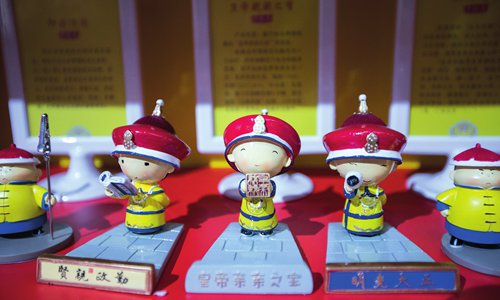Palace Museum faces challenge on IP revenue stream
Source:Globaltimes.cn Published: 2020/1/20 1:44:01

Figurines of the Palace Museum’s cartoon emperor Photo: VCG
As Beijing's Palace Museum continues to receive criticism for "abuse of privileges" incident after two women drove into its restricted courtyard, questions have surfaced whether it would continue to cash on its Intellectual property (IP) -driven success.
The Palace Museum, also known as the Forbidden City, is one of the most widely recognized and successful IP producers of cultural and creative items in China. Consumers and visitors can buy such popular items like adhesive tape, stationary, and lipsticks.
The cultural items have become a source of substantial revenue for the museum. From 2013 to 2016, the historical landmark's value jumped from 600 million yuan to nearly 1 billion yuan, according to media reports.
As the initial heat recedes, the museum has drawn criticism due to its "over commercialization," while some have noted the world-renown palace should find new ways to earn money amid rising competition from other domestic museums.
Last week, the Palace Museum's Corner Tower Restaurant offered an "imperial family" feast on Chinese New Year's Eve. Reservations for the 6,688 yuan ($966.78) meal for a table of 10 sold out in one day, sparking heated debates online, where netizens said it was "too commercialized."
The restaurant later canceled the dinner, without disclosing the reasons behind the decision.
Reports found that since 2017, there have been over 2,500 museums, art galleries and memorials in China that have developed IP products based on their collections.
In future markets, cultural IP will increase. For how long the IP business at the Forbidden City will continue depends on the museum, read a comment from one WeChat account.